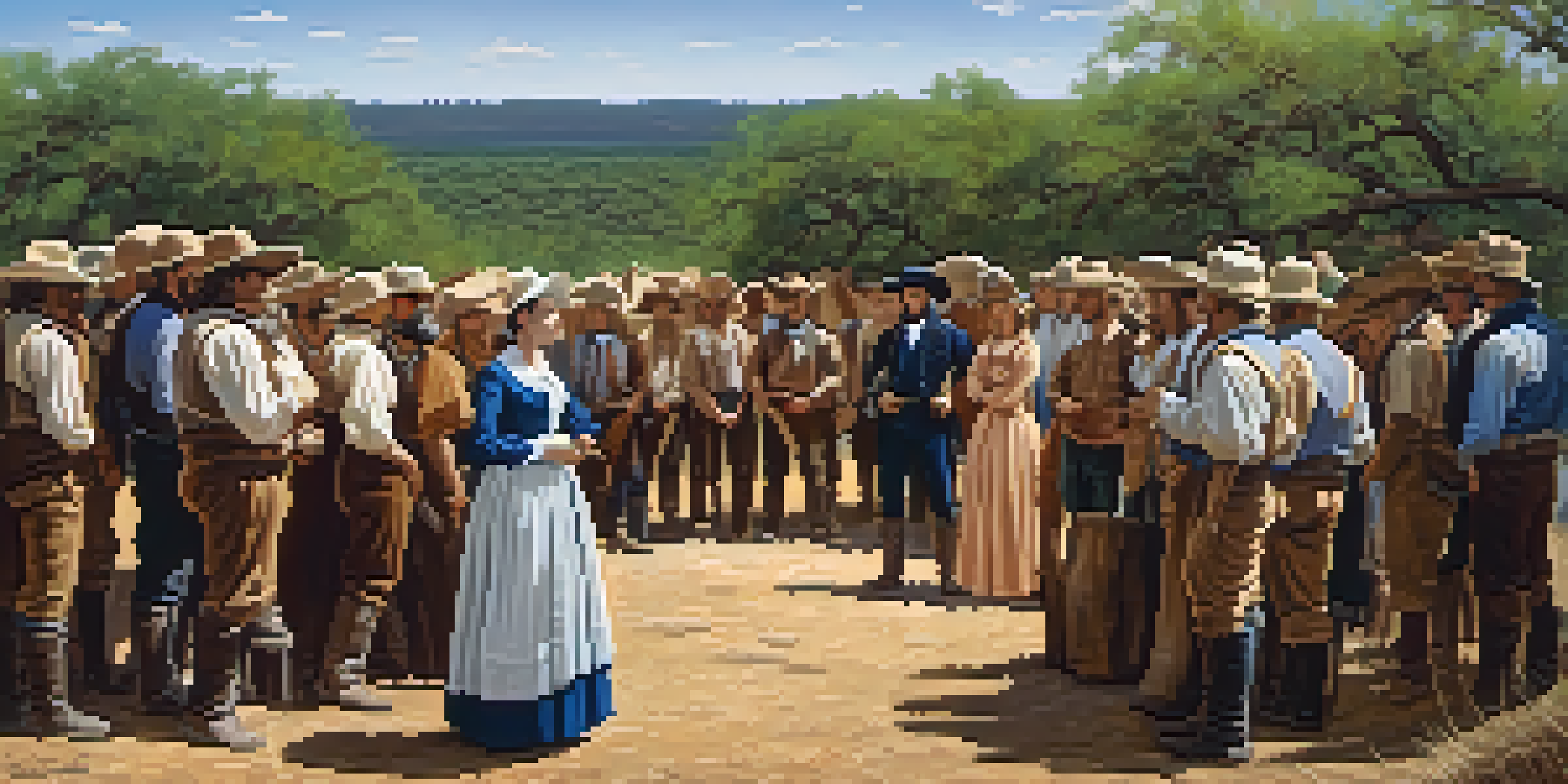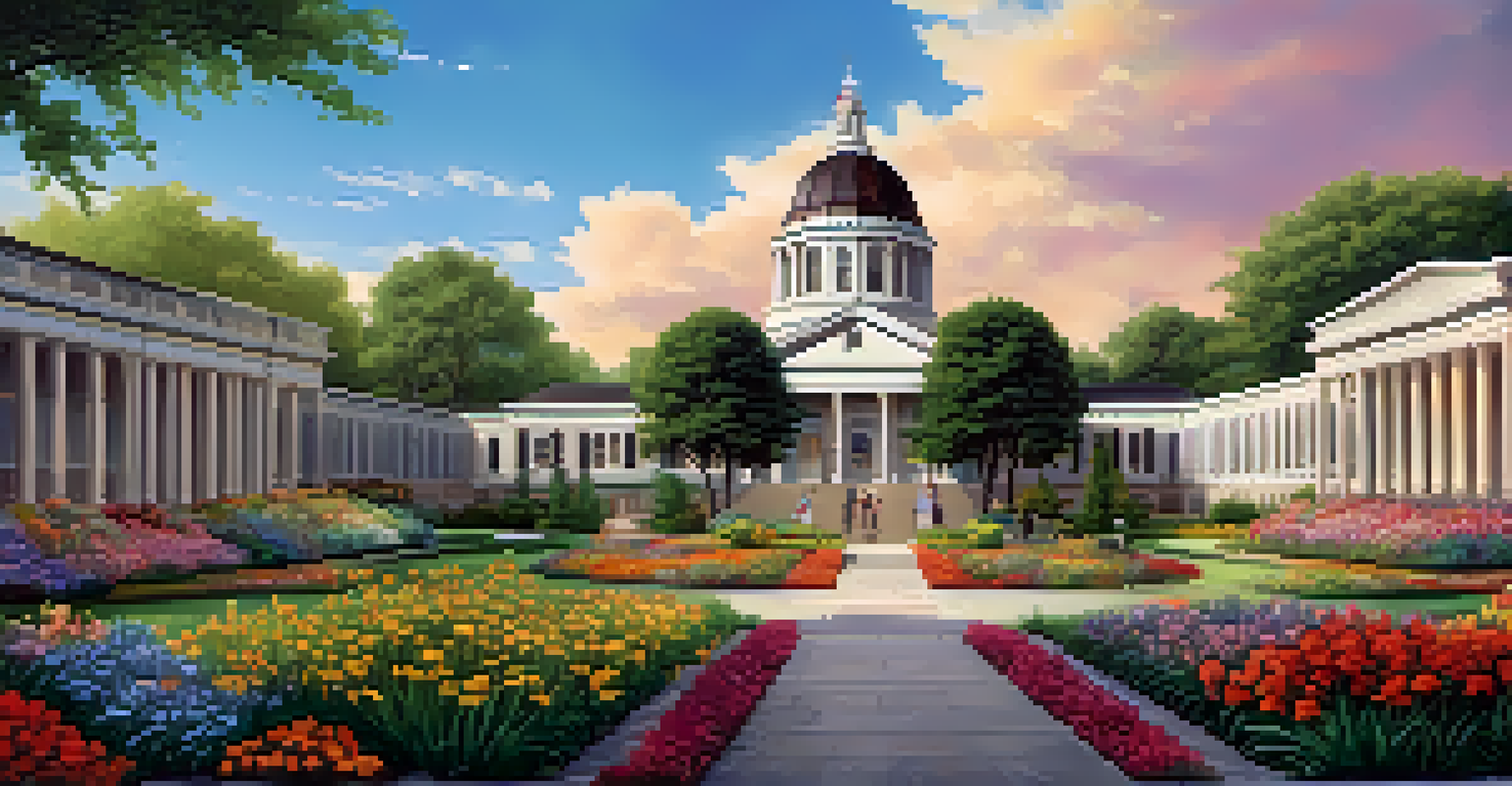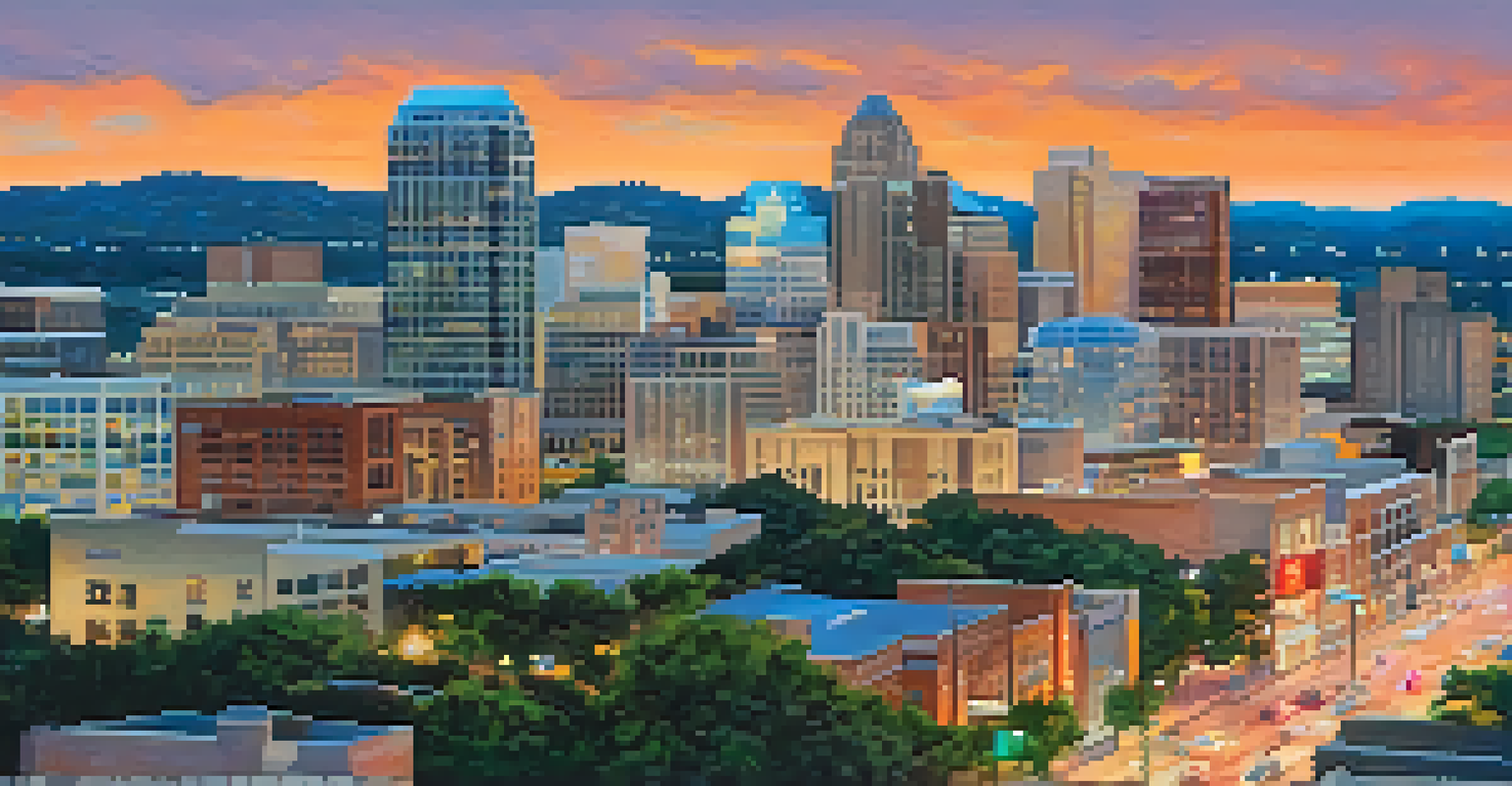Mirabeau B. Lamar: President and His Impact on Austin's Growth

Early Life and Political Rise of Mirabeau B. Lamar
Mirabeau B. Lamar was born in 1798 in Georgia, and his early life was marked by a sense of adventure and ambition. After moving to Texas, he quickly became involved in the struggle for independence from Mexico, showcasing his leadership skills. His charisma and vision for Texas set him apart, leading to his election as the second president of the Republic of Texas in 1838.
Education is the most powerful weapon which you can use to change the world.
Lamar's background as a soldier and politician played a significant role in shaping his presidency. He was not just a politician; he was also a poet and an advocate for education, which made him a well-rounded leader. By focusing on the growth of Texas, he laid the groundwork for what would become a thriving state.
His rise to prominence was not without challenges, but Lamar's determination and commitment to Texas' future impressed many. His vision would soon lead him to implement policies that would have lasting impacts on Austin and the surrounding areas.
Lamar's Vision for Education in Texas
One of Lamar's most significant legacies is his commitment to education. He believed that a well-educated populace was essential for the growth and prosperity of Texas. In 1839, he initiated a system of public education, which was revolutionary for its time and laid the foundation for future educational reforms.

Under Lamar's leadership, the Republic of Texas established its first public school system, demonstrating his belief in the importance of accessible education. This initiative not only benefited the children of his era but also set a precedent for future generations. His passion for education can be likened to planting seeds that would grow into a flourishing garden over the years.
Lamar's Commitment to Education
Lamar established the first public education system in Texas, believing that a well-educated populace was essential for the state's growth.
Lamar's focus on education attracted settlers to Austin and encouraged families to move to the area, knowing their children would receive a quality education. His vision for a literate society contributed significantly to the growth and development of Austin as a cultural and educational hub.
Economic Development Initiatives Under Lamar
Lamar understood that education was just one piece of the puzzle for Texas' growth; economic development was equally critical. He implemented policies that promoted agriculture, trade, and industry in Austin, recognizing the city's potential as a commercial center. By fostering economic growth, he laid a foundation for prosperity that would attract more residents and businesses.
Culture is the arts elevated to a set of beliefs.
One of his key initiatives was to promote land grants and encourage settlement in the area. This not only increased the population but also stimulated the local economy. Imagine Austin as a canvas, and Lamar as the artist, painting it with the colors of opportunity and growth.
Additionally, Lamar's administration worked to improve infrastructure, such as roads and transportation, making it easier for goods to move in and out of Austin. These efforts solidified Austin's reputation as an emerging economic powerhouse in Texas.
Lamar's Role in Establishing Austin as the Capital
During Lamar's presidency, a pivotal decision was made to move the capital of Texas to Austin in 1839. This move was strategic, as Austin was located in a more central area, which made it more accessible for the growing population. Lamar's support for this decision was instrumental in establishing Austin as the political heart of Texas.
The choice of Austin as the capital not only symbolized a new beginning for the Republic of Texas but also positioned the city for growth. Lamar envisioned Austin as a place where government and culture could thrive side by side. It was like choosing the perfect location for a new home, ensuring it had everything needed for a flourishing life.
Economic Development Initiatives
He promoted agriculture, trade, and infrastructure improvements, positioning Austin as a thriving economic center.
This decision had lasting implications for the city, attracting government officials, businesses, and citizens eager to participate in the new political landscape. Lamar's foresight in this matter helped to solidify Austin's importance in Texas history.
Cultural Contributions and Legacy of Lamar
Beyond politics and education, Mirabeau B. Lamar was also a cultural figure. He was a poet and a strong advocate for the arts, believing that culture enriched society. His support for artists and writers helped to cultivate a vibrant cultural scene in Austin, which still resonates today.
Lamar's love for the arts can be seen as a commitment to the richness of human experience. He understood that a flourishing culture would attract people to Austin, creating a community that valued creativity and expression. This emphasis on culture was akin to adding vibrant colors to an already beautiful mural.
His contributions to the cultural fabric of Austin have endured, making the city a place where art and history coexist. The legacy of his support for the arts is still reflected in Austin's status as a cultural hub in the modern era.
Controversies and Challenges During Lamar's Presidency
Lamar's presidency was not without its controversies and challenges. His administration faced issues such as conflicts with Native American tribes and disputes over land policies. These challenges tested his leadership and decision-making abilities, revealing the complexities of governing a growing and diverse population.
Despite his efforts to promote peace and development, Lamar's policies sometimes led to tensions with Native American groups. This aspect of his presidency serves as a reminder of the multifaceted nature of leadership and the difficult decisions that come with it. It's similar to a tightrope walk, where balance is essential but hard to achieve.
Cultural Contributions to Austin
Lamar's support for the arts and culture helped cultivate a vibrant community that still resonates in Austin today.
These controversies, however, did not overshadow his achievements. They highlighted the challenges of nation-building and the necessity of navigating complex social issues, which are still relevant in discussions about leadership today.
Lamar's Lasting Influence on Austin's Development
Mirabeau B. Lamar's impact on Austin is evident in many aspects of the city today. His vision for education and cultural development helped shape Austin into a vibrant metropolis known for its innovation and creativity. The foundations he laid continue to support the city's growth and identity.
Austin's reputation as a center for education and culture can be traced back to Lamar's policies and beliefs. The city's universities and cultural institutions reflect the values he championed, showcasing the long-term effects of his presidency. It's like planting a tree; while it takes time to grow, the shade it provides lasts for generations.

As we look at Austin today, we see a city that embodies the spirit of Lamar's vision. His influence is woven into the very fabric of the city, reminding us of the important role leadership plays in shaping communities.